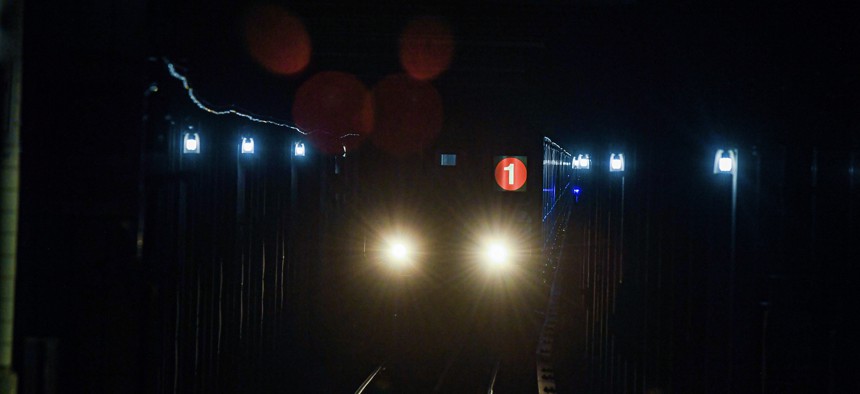When Gov. Andrew Cuomo declared a state of emergency for the New York City subway system four years ago last month, the city was a different place. Mayor Bill de Blasio was looking ahead at a second term, New Yorkers had yet to become acquainted with “Train Daddy” Andy Byford, and the depths of problems plaguing the ailing transit system had arguably yet to be fully realized. What was clear in June 2017 was that the system was in crisis. The emergency order – intended to expedite repairs and improvements to the system – was preceded by high profile derailments, soaring train delays and equipment failures.
This June, following dozens of extensions of the state of emergency order over the last four years, Cuomo allowed the order to expire. “The Subway Action Plan and other actions taken by the Metropolitan Transportation Authority since the emergency went into effect have led to significant service improvements and we look forward to seeing further gains as the authority bounces back from the pandemic and implements an unprecedented new capital program,” Cuomo spokesperson Shams Tarek said in an emailed statement. Tarek did not comment on whether there were specific markers of progress that the governor used to determine it was time to end the state of emergency.
A spokesperson for the MTA said that the system has seen performance improve and modernization work progress over the last four years. “The governor’s executive order declaring a transit emergency made it easier for the MTA to make needed changes to improve service for all our customers,” senior adviser to the MTA chair Ken Lovett said in an emailed statement. “The executive order did what it was meant to do, set the MTA on the right path for improvement. It was never designed to be permanent.”
Performance metrics have improved since 2017, including a decline in weekday train delays and a higher share of trains arriving on time. But progress is rarely linear. The MTA took an immediate hit last spring when the coronavirus pandemic halted not only service and ridership, but progress on some capital improvement projects. As the MTA recovers from the pandemic, new problems have emerged, including canceled subway trips attributed to a staffing shortage. Ridership, meanwhile, has rebounded some from pandemic lows, but is still far from pre-COVID-19 levels.
To assess what progress the MTA has made since the start of the state of emergency, City & State looked at performance data in three points in time – at the start of the state of emergency in June 2017, right before the start of the pandemic last year, and this May, when 24/7 subway service was restored. Here’s what we found.
Major incidents
The MTA defines major incidents as events that delay 50 or more trains in the system.
June 2017: 81
February 2020: 33
May 2021: 36
In June 2017, major incidents were most frequently designated as “signals” problems. The MTA’s aging signaling system has been blamed for major delays, and during his tenure leading New York City Transit, Andy Byford made modernizing that system a top priority. The pandemic has contributed to a delay in some signal upgrades, however. Today, major incidents are still most frequently attributed to signal problems, followed closely by police and medical issues, or people being on the tracks.
Weekday delays
The MTA defines delays as arriving more than five minutes late or skipping any planned station stops in a 24-hour period.
July 2017*: 57,164
February 2020: 26,930
May 2021: 20,739
*Data for June 2017 was not available in MTA board meeting materials posted online.
In 2017, weekday train delays were most frequently caused by overcrowding, according to reports from MTA board meetings at the time. Just before the start of the pandemic last year, that figure had decreased significantly to under 30,000 weekday delays in February, and now hovers above 20,000.
Weekday terminal on-time performance
The MTA defines terminal on-time performance as the share of scheduled trains that arrive early, on-time or no more than five minutes late at their destination terminals.
June 2017: 61.8%
February 2020: 82.7%
May 2021: 87.1%
Like train delays, on-time performance is designated as a “legacy indicator” by the MTA – one they say doesn’t reflect customer experience as well as other metrics, but which they continue to report. Four years ago, weekday trains arrived on-time less than two-thirds of the time, but that metric has since improved and been on a generally upward trajectory since.
Additional platform time
The MTA defines additional platform time as the estimated average time that riders wait for a train beyond their scheduled waiting time.
June 2017: 1 minute 28 seconds
February 2020: 1 minute 9 seconds
May 2021: 1 minute 18 seconds
Additional train time
The MTA defines additional train time as the estimated average time that riders spend on the train beyond their scheduled travel time.
June 2017: 1 minute 22 seconds
February 2020: 36 seconds
May 2021: 9 seconds


